Our History
A Heartfelt Response to a Family in Crisis
In 1983, Palm Beach County residents Lucy Runyon, Jayne Ellison, and Kay Mansolill heard this gut-wrenching story on a local radio station: A family of four was relocating to Florida from Texas. Along the way, one of the children fell terribly ill. The child required hospitalization that drained the family’s savings, and they arrived in West Palm Beach destitute. Unable to afford a home or a hotel room, they were forced to take shelter under the Royal Palm Bridge.
Runyon, Ellison, and Mansolill responded immediately, helping find them an affordable home and secure employment. By “adopting” this family until they could get back on their feet, our founders established a model we continue to follow today. They understood that along with a safe place to live and other basic needs, they were giving this family back their dignity.
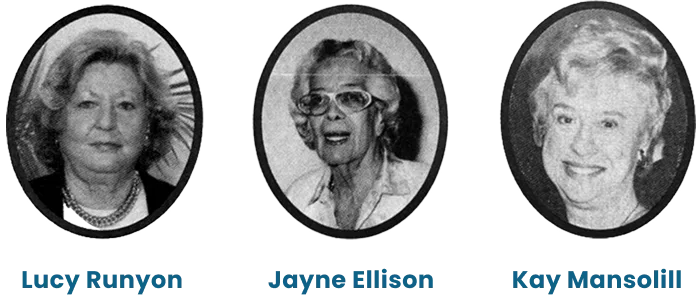
A Growing Mission
The women continued to assist families who were “temporarily down on their luck and too modest to ask for help,” Runyon was quoted as saying. In collaboration with the First National Bank in Palm Beach, the first Board of Directors was formed. One year later, in 1984, Adopt-A-Family incorporated as a 501(c)(3) not-for-profit charitable organization.
Our founders continued developing a list of local families in need of assistance, rallying local businesses and institutions to support the growing mission. Some of the companies that assisted in 1983 continue to support Adopt-A-Family’s efforts today.
Adopt-A-Family Through the Years
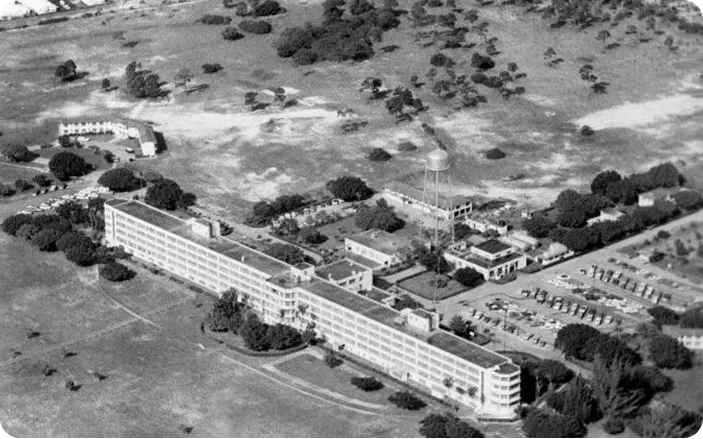
1983 - 1988
- The organization is named after its approach of "adopting" in-crisis families with minor children.
- In 1984, Adopt-A-Family of the Palm Beaches is incorporated as a 501(c)(3) not-tor-profit charity.
- The first Tree Lighting Celebration is held at Saks Fifth Avenue in Palm Beach.
- The first corporate office opens at A.G. Holley State Hospital in Lantana.
- The organization's primary efforts revolve around matching "adopters" - individuals, businesses, and the faith-based community - with families in need of housing and other assistance.
By the end of 1988, Adopt-A-Family has served 351 families.

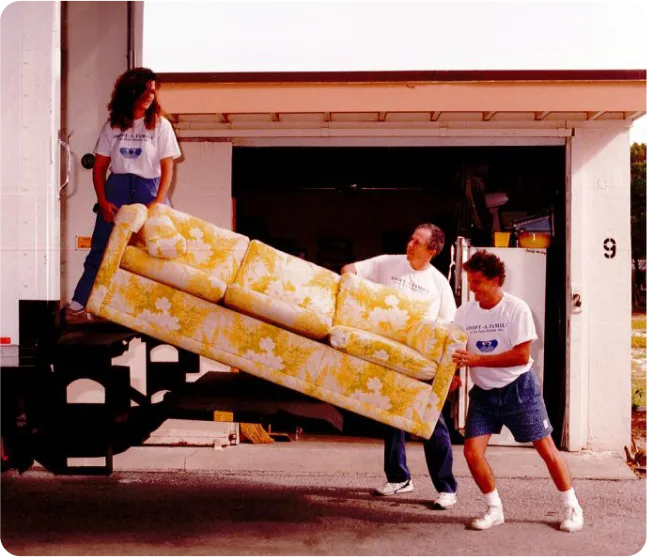
1989 - 1994
- Adopt-A-Family holds the first Santa Shoppe and the inaugural benefit golf tournament.
- The agency is featured on World News Tonight with Peter Jennings.
- The corporate office moves to South Congress Avenue in Palm Springs.
- Two new initiatives are launched: Project SAFE I permanent supportive housing and the Project Grow homework/aftercare program.
- The rental assistance program is renamed Project Uplift.
By the end of 1994, Adopt-A-Family has served 2,508 families.

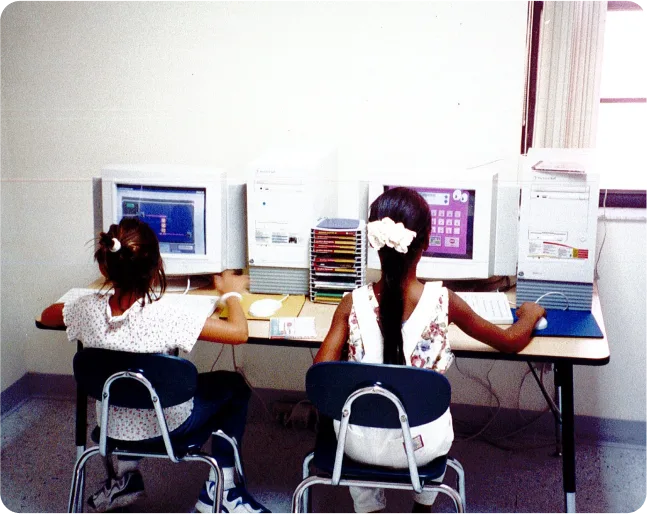
1995 - 2000
- With the understanding that the most effective service delivery requires families to have safe and affordable housing, the concept of the Lake Worth campus begins to emerge.
- In 1996, the agency purchases the five-building, 40-unit Lucerne Gardens Apartments, future home of Project SAFE II.
- In 2000, Adopt-A-Family buys a two-building, 24-unit complex down the street, which will eventually be home to families in the Service Enriched Housing program.
By the end of 2000, Adopt-A-Family has served 10,090 families.

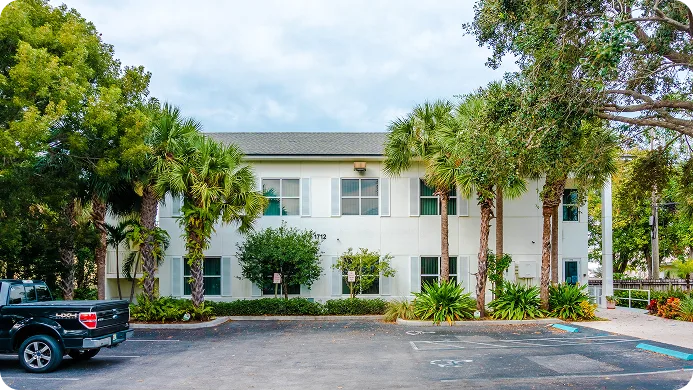
2001 - 2006
- A satellite office opens in Lake Park, providing services (including food distribution) to targeted northern communities.
- The agency's main office moves to the YWCA building in West Palm Beach as construction begins on the Lake Worth headquarters, which opens in 2003.
- Project Grow becomes licensed and moves into the first floor of the newly completed headquarters.
- After serving as Adopt-A-Family's Chief Executive Officer for over two decades, Terry Bozarth retires Wendy Tippett becomes the agency's second CEO.
By the end of 2006, Adopt-A-Family has served 21,996 families.

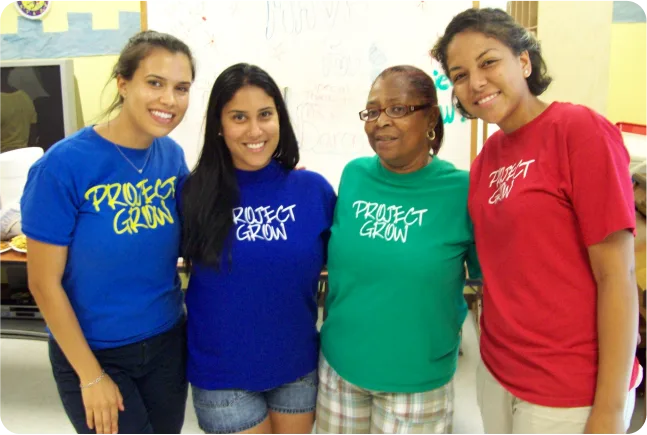
2007 - 2012
- Construction finishes on the nine-unit Wiley Reynolds Gardens Apartments, which makes three-bedroom units available on the Lake Worth campus.
- Through federal Neighborhood Stabilization Program 2 funding, the agency acquires 41 foreclosed residences in Lake Worth. After rehabilitating every home, the agency sells 17 of the properties and maintains 24 as affordable rentals.
- The agency's rent assistance/homeless prevention effort begins operating under the name Housing Stabilization Program.
- Adopt-A-Family is asked to serve as the lead family entity at the newly opened Senator Philip D. Lewis Homeless Resource Center.
By the end of 2012, Adopt-A-Family has served 39,296 families.

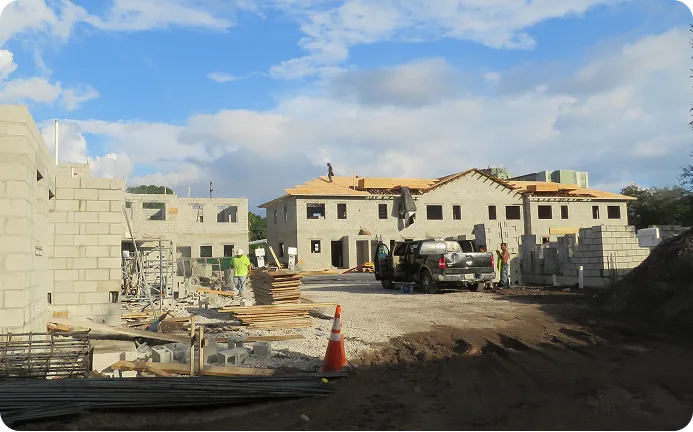
2013 - 2018
- After more than 20 years of service, CEO Wendy Tippett leaves the agency to assume a leadership role within Palm Beach County. Matthew Constantine is appointed the agency's third Chief Executive Officer.
- Adopt-A-Family assumes management of the 19-unit Program REACH family emergency shelter.
- The Project Grow playground is reimagined, with artificial turf and a new playscape.
- A low-barrier on-site Mental Health Program is launched.
- The agency purchases four parcels adjacent to the headquarters and the concept of Julian Place is born.
By the end of 2018, Adopt-A-Family has served 51,722 families.

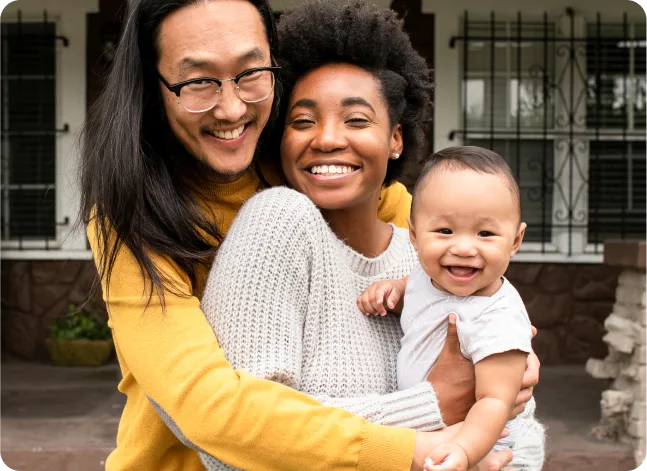
2019-Today
- The 14 Julian Place townhomes receive their certificates of occupancy.
- The agency becomes part of a demonstration program for housing and supportive services for pregnant and parenting youth.
- Adopt-A-Family receives a $5 million Day 1 Families Fund grant to expand and enhance efforts to assist families experiencing unsheltered homelessness.
- The Job Coach Program, Youth Success Program, and Gen2 Education Partnership are launched, bringing new and much-needed services to the Lake Worth campus.
From 1983 to today Adopt-A-Family has served over 60,000 families.
